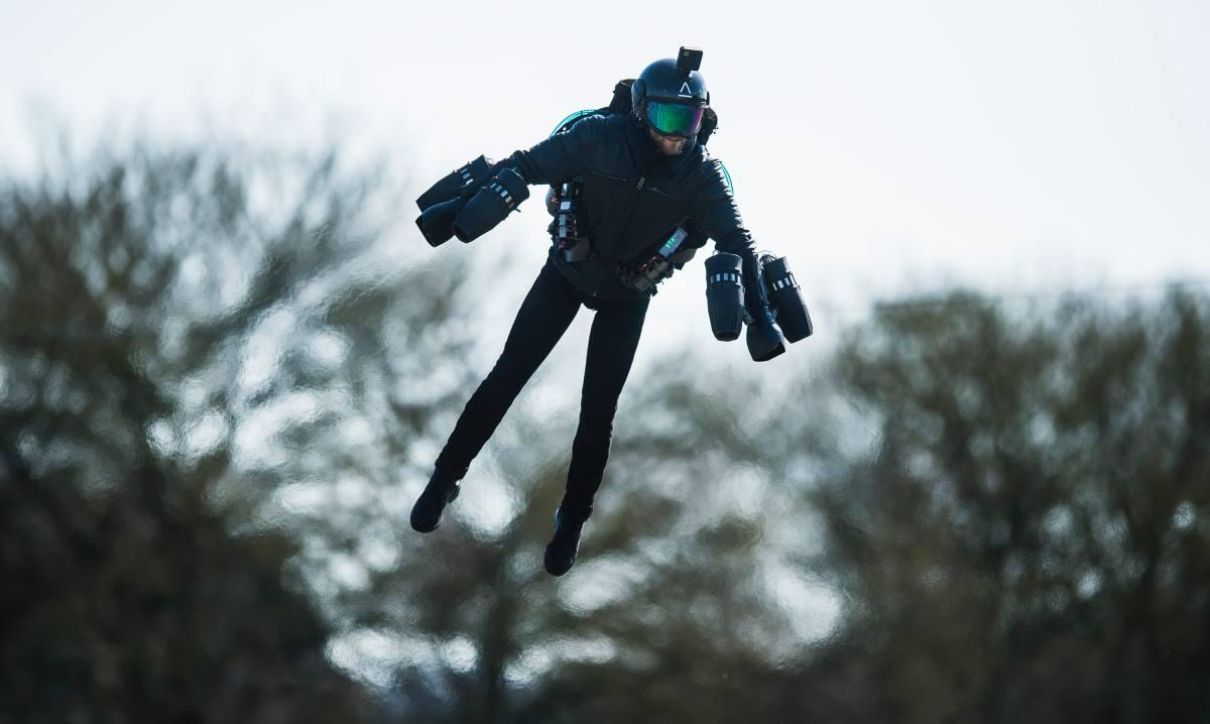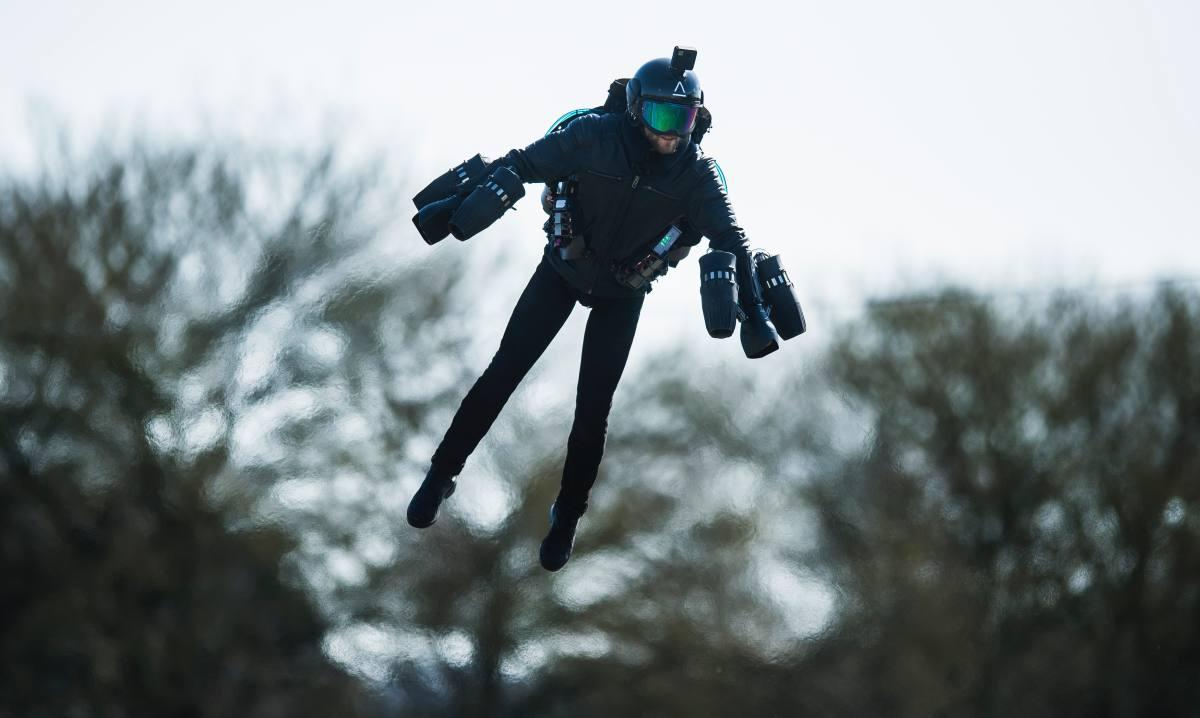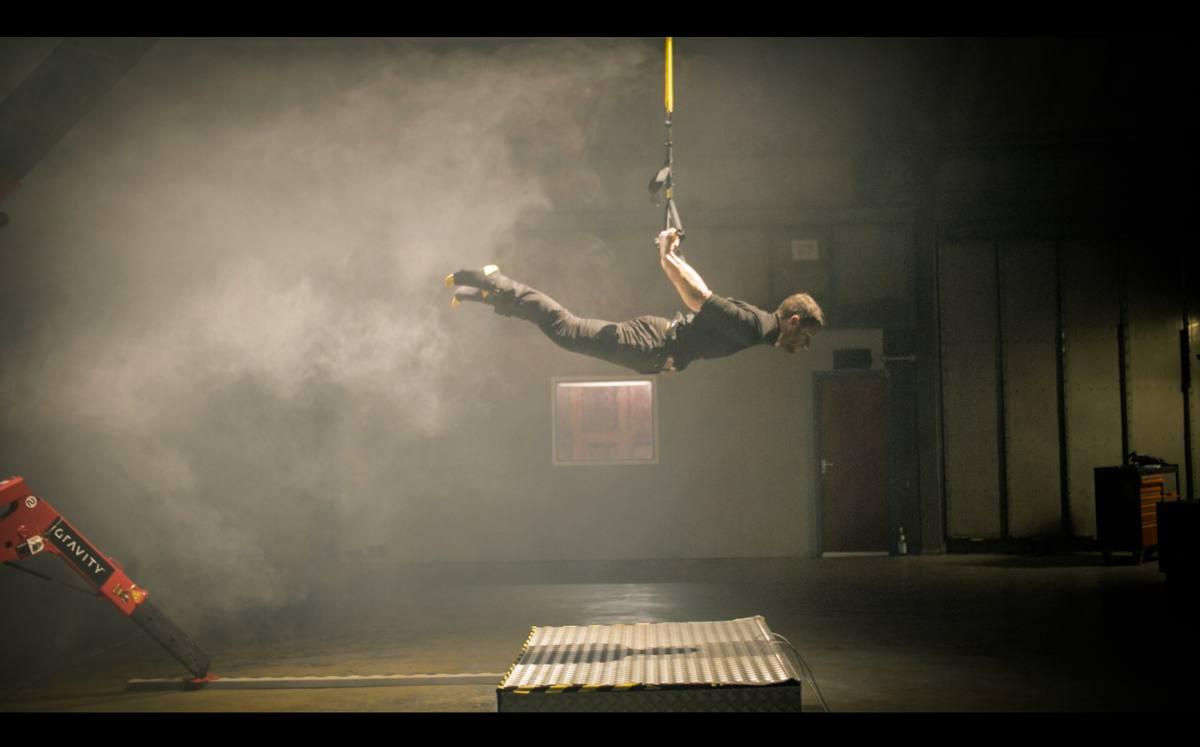Gravity Defying

Reimagining human flight for the 21st century takes blue-sky thinking.

Flight. It’s a subject that has inspired humans for many generations. But what if you tackled the challenge of flight in an entirely different way?
What if you added technology to the human mind and body, rather than putting the human body into a vehicle?
This was the unusual challenge 39-year-old Richard Browning set himself two years ago, alongside a very normal day job in London: working as an oil trader for British Petroleum as part of a 16-year corporate career.
“The human body and mind is an amazing machine but to fly you need a bit more horsepower than what we come out of the box with,” he says at a conference on disruptive technology hosted by Swiss bank UBS in 2018. Browning calls himself “a glutton for challenges”, having joined the Royal Marines Reserve and completed several ultra-marathons.
“I’ve always had a reputation for challenging the status quo and pushing limits, hopefully without being too annoying,” he says. “If we didn’t have that behaviour in the world, we’d never advance. If you look at any major technology breakthroughs, they are usually surprising, because, if they weren’t, they would have been done earlier.”
Keen for an extraordinary challenge, Browning started experimenting with a miniature kerosene jet engine strapped to each arm, taking test flights in a deserted country lane. He moved onto two engines per arm, using his arms to control the direction and speed of the flight. Then he added engines to his legs.
“There’s a strange thing with human legs, as soon as you get off the ground you tend to bend your knees and that doesn’t work when there’s an engine attached to them. We learned from every single failure, which was refreshing coming from a corporate background,” he recalls.

The configuration he eventually landed on was one engine on both legs and two on each arm. The six engines, ECU kerosene microturbines, created 130kg of thrust against Browning’s body weight of around 75kg. To navigate, he wore a helmet installed with a Sony Smart Eyeglass Developer Edition (912-1099). which provides fuel and engine status on a heads-up display (HUD) system. With that, he was able to set a brand-new Guinness World Records title for the fastest speed in a body-controlled Jet Suit last November, flying vertically at 32 miles per hour across a lake.
“It was an easy record to break as it didn’t exist before,” he jokes.
Browning and his team launched their company, Gravity Industries, in April last year after less than a year of research and development into a customisable Jet Suit prototype that they named the Daedalus (Browning’s younger son, aged 10, came up with the name). The Jet Suit could reach up to speeds of 200mph and can fly for 10 consecutive minutes at a few thousand feet, but he keeps the speed and altitude low, at the moment, for safety reasons. The suit is also fitted with an airbag protection system.
During a demo show in the US, the suit caught the eye of billionaire venture capitalist Tim Draper and his son Adam. “Tim and Adam literally wrote a cheque for US$650,000 in the car park after the very first demo, while I was still in the suit,” he recalls.
For such an outlandish idea, the company is already highly profitable. The 20-month-old start-up has generated US$1.3 million, mainly from flight experiences and selling a handful of customised suits, most recently to a New Yorker for US$440,000. It's technology is fully patented. Gravity employs a full-time team of 10 and a wider team of 20 more all over the world.
“I’m the first to admit this started as something that you think, surely this can’t work, but I found it too tantalising not to have a go. To my surprise, it worked better than I could possibly have dreamed. It’s now notionally a US$30 million aerial business,” says Browning.
“The manoeuvrability of the suit means you can move around like a Marvel superhero,” says Browning. “For some, it’s an irresistible experience.”
Apart from selling experiences and suits, and working with the US, UK and Singapore military, Gravity is set to launch an international race series this year and is currently seeking sponsors. Potential locations include Barbados, Hong Kong, Singapore and San Francisco Bay Area. “Imagine Red Bull Air race mixed together with F1 night-time street circuits, and a Ninja warrior mashed together,” he describes.
“A benefit of going around the world has been to blow people’s minds from four corners of the planet. This is the most spectacular thing people have genuinely seen in their lives. The dream of flying seems to be totally ubiquitous.”
This article originally appeared in Billionaire's Visionaries Issue, March 2019. To subscribe contact









